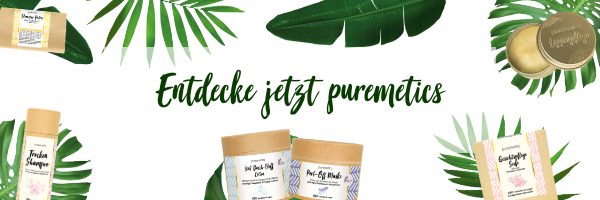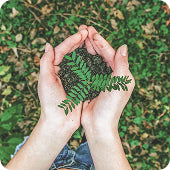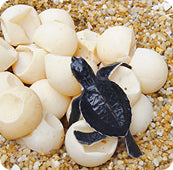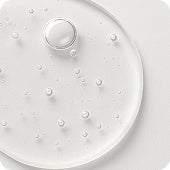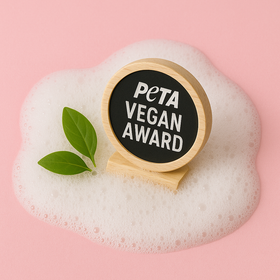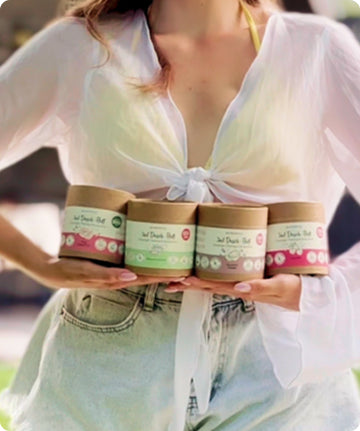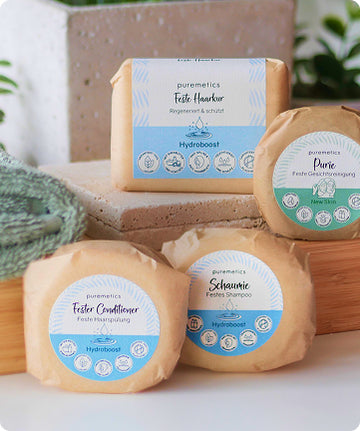Bake, bake cakes - our tips for plastic-free baking!
Bake, bake cakes - our tips for plastic-free baking!

Are you looking for plastic-free alternatives when baking? We show you nine tips on how to avoid plastic when baking.
How many plastic bowls do you have now? While plastic baking utensils look nice and are easy to store, they also tend to need to be replaced more often because they are badly discolored, broken, or torn. So how about alternatives made of glass, wood, ceramics, cast iron or stainless steel?
1. Kitchen apron
When it comes to your apron, make sure that it is made from 100% organic cotton. There are aprons that are partly made of polyester and thus release fine microplastic particles into the waste water when washed. You can read all the details in this blog post: Plastic Friday post
2. Bake like grandma used to make
The cake should slide! OK! How about oil, flour or breadcrumbs? Works great, I promise. And baking pans with non-stick coatings can also be dispensed with. They are usually made of Teflon plastic anyway and can contain chemical and health-damaging pollutants.
3. Baking paper
Disposable baking paper is not just called that, it also looks like paper. However, most baking paper rolls are covered with a wafer-thin layer of silicone and cannot be recycled. Baking paper should therefore be disposed of with the residual waste. The maximum number of degrees must also be observed, since toxic substances can be released at too high a temperature. Last but not least: baking paper can be reused a maximum of six times. That means: garbage, lots of garbage.
Here are some great alternatives:
1. What worked before baking paper was invented still works today: Simply spread baking trays and baking tins with some vegetable margarine or a suitable vegetable oil. Biscuits & Co. can be removed even more easily if the fat is additionally sprinkled with a little flour, ground nuts or semolina.
2. Baking trays made of heat-resistant glass are a clean and non-toxic alternative to baking paper. Due to their non-porous, smooth surface, fried and baked goods stick less and do not burn on.
3. Not only Christmas cookies, but also other cookie dough or small pastries can be placed on baking wafers with the help of a piping bag or two spoons. They are tasteless, do not stick to the tray and are therefore another way of doing without baking paper.
4. Fireclay pizza stones are made of natural clay and can withstand higher temperatures without being damaged. They are particularly good for baking bread and pizza, pushing the dough directly onto the hot stone. The stones cannot be washed off and therefore develop a patina over time. However, this does not affect the usability in any way.

4. Bowls
There are also plastic-free alternatives to plastic bowls. Glass or stainless steel bowls work well for this.
Tip: If you ever whip vegan cream, put the stainless steel bowl in the fridge beforehand. When the cream and bowl are really chilled, vegan cream is easier to whip up.
5. Cling film
You can also wrap baked goods plastic-free in vegetable wax cloths instead of cling film. The cloths can be wiped off with a damp cloth and reused. You can make the wraps yourself with leftover cotton and vegetable wax or buy them from Be Food Wraps . The plant wax wipes are completely vegan.
Glass containers or preserving jars with an airtight seal are also suitable for keeping food fresh. Sometimes another plate is enough to cover the food and keep it fresh.

6. Containers
To protect dry ingredients such as flour, sugar or nuts and oatmeal from moisture or food moths, you can also use storage jars with an airtight seal. Labels help you distinguish the contents.
7. Lemon and Orange Flavor
Nobody needs plastic-packaged lemon or orange flavor from the bakery shelf. Instead, prefer to use the zest of fresh, untreated organic citrus fruits. This not only gives you the juice, but also saves plastic and money.
8. DIY: Vanilla Sugar
Unfortunately, the small sachets of vanilla sugar from the supermarket are also covered in plastic. You can easily make vanilla sugar yourself at home. All you need is a sealable container, sugar and a vanilla bean. The pod can also already be open and scraped out. Place the vanilla bean in a sealable jar with sugar and leave for a few days. Tada, done! In no time you have homemade vanilla sugar without plastic waste.
9. DIY: baking soda
Like vanilla sugar, the pre-portioned sachets of baking powder are wrapped in plastic foil. To make baking powder at home, mix equal parts baking soda, ascorbic acid (pure vitamin C), and cornstarch. The mixture can then be stored in a screw-top jar.
For 500 grams of flour, 20g of the baking powder should be sufficient.
Our conclusion:
As you can see, a whole lot of plastic can be avoided when baking. Sometimes it's the materials that can be exchanged or baking ingredients that you can make yourself.
Pro tip: If you switch to plastic alternatives for utensils or containers, check whether the items are already available second-hand.
If you would like to be informed directly about the latest blog posts, please follow us Instagram ! :-)

